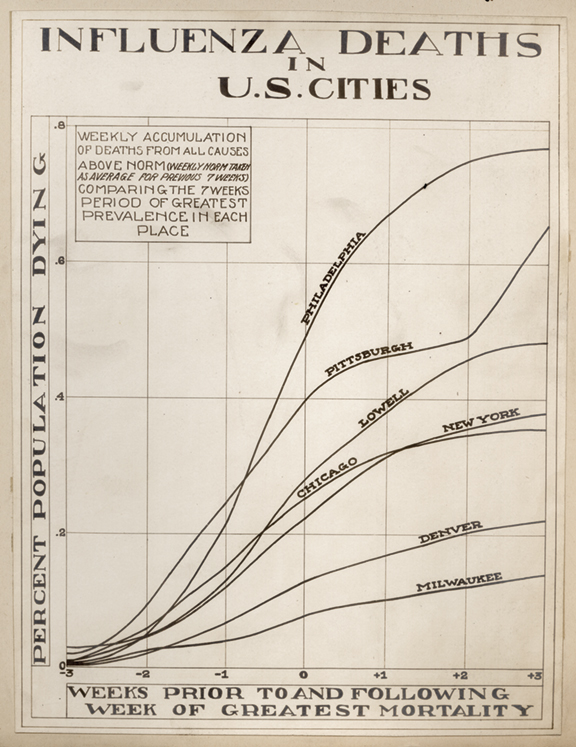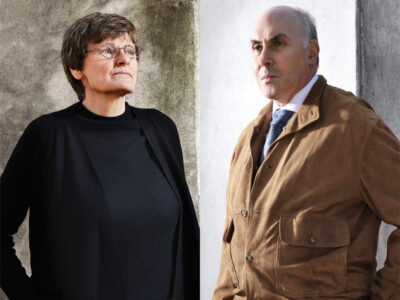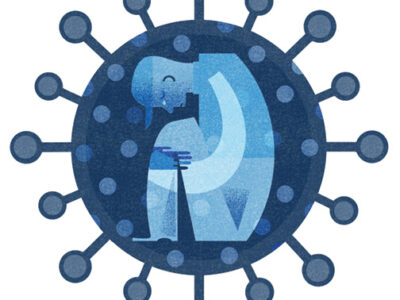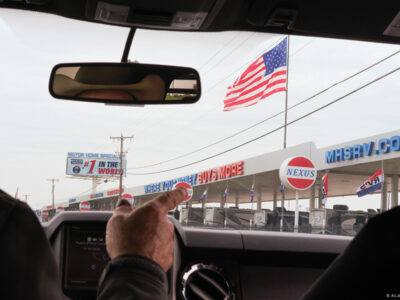
A new Penn Archives project aims to document people’s pandemic experiences.
Shortly before the fall semester started in 1918, a deadly flu arrived in Philadelphia. The timing could not have been worse. World War I was still in full swing and, with many doctors and nurses working overseas, city hospital staff was reduced by an average of 25 percent.
Nurses in training at Penn were preparing to join them but, as the Class of 1919 Training School for Nurses yearbook describes, “Then came the epidemic of influenza, and our plans for service were brought to a standstill, for we had all we could manage at home.” Two members of the class, Grace Virginia Fitzgerald and Marie Luise O. Bormann, died from the virus on October 12 and 13, respectively, in 1918. “We dedicate this book to the memory of our classmates,” the Nurses’ Record reads.
Surprisingly, it is one of only a few references that the University has to a pandemic that killed more than 12,000 Philadelphians. “It seems that World War I was just the bigger issue,” says J.M. Duffin, acting University archivist, office manager, and senior archivist at the University Archives and Records Center. “It may have also been that [the pandemic] happened so quickly and was just so awful that people didn’t want to remember it.”
Overall, the 1918 influenza pandemic did not have the same institutional impact on the University that COVID-19 has had. On October 4, 1918, public schools and churches in Philadelphia were ordered to close, but the city’s Board of Health did not see a need to cancel classes at Penn. Although indoor club meetings were canceled, and large outdoor gatherings were postponed—including the start of the football season—University life returned to normal fairly quickly once the city quarantine was lifted on October 27.
After seeing that there was so little about the 1918 influenza pandemic, Duffin thought, “I know people will want to look at [the COVID-19 pandemic] 20 or 30 years from now, even five years from now. The best time to collect materials is when it’s very close to the events themselves, while the people are still around and it’s fresh in people’s minds.”
He continues, “That’s part of the reason why I felt really compelled to be proactive in this case.”
Shortly after campus was depopulated in mid-March, Duffin and his colleagues created the Penn COVID-19 Community Archiving Project to document the experiences of the Penn community during the pandemic. According to the project’s website, the “goal is to collect as many diverse voices and experiences as possible so that future historians, students and scholars, doctors and scientists, public policy and health experts, University administrators, and others will be able to understand and learn how our community reacted to the COVID-19 pandemic and how we were able to respond and help support the broader world.”
The website allows electronic or hard copy submissions from anyone in the Penn community—students, faculty, staff, alumni, and others. “This is the first time we have a sort of streamlined donation process,” Duffin says. “Someone can go online and fill out the paperwork, upload the file, and boom, we have the item for our collection—as opposed to calling us up, having a discussion, arranging a time to mail the materials, and so forth.”
Duffin expects records will be donated in electronic or digital format more in the future, instead of paper or analog.
Suggested materials that the project seeks include photographs, videos, journal entries, and artwork. So far, most contributions have come from students, and the second largest group of contributors is alumni.
“Someone submitted photos of graffiti they saw and commented on it,” Duffin says. There are also personal essays from alumni discussing homeschooling their children, students describing their experiences with online classes, and, of course, a face mask selfie. “Twenty years from now, someone will see that and think, ‘Oh yeah, that was the COVID-19 period,’” Duffin says. “Hopefully that will be the only time people are remembering wearing face masks.”
One of Duffin’s favorite submissions so far is from the Penn Band. “They basically submitted all of the planning materials for their videos, of how they put together these virtual concerts,” including email correspondence and schedules, he notes. “So we not only have the final product, but more importantly, we really like to capture how people’s normal operations changed—how did the band learn to do all of this stuff remotely? It’s all documented now.”
The website will be open to contributions for at least a year or more, and Duffin hopes more people in the Penn community will submit something that shows how their lives changed during this time—or how they’ve stayed the same.
“This is something that’s really important for the history of the University,” he says, “if not the country, and now the world.” —NP
To learn more about the Penn COVID-19 Community Archiving Project and make a submission, visit archives.upenn.edu/covid-19-project.




